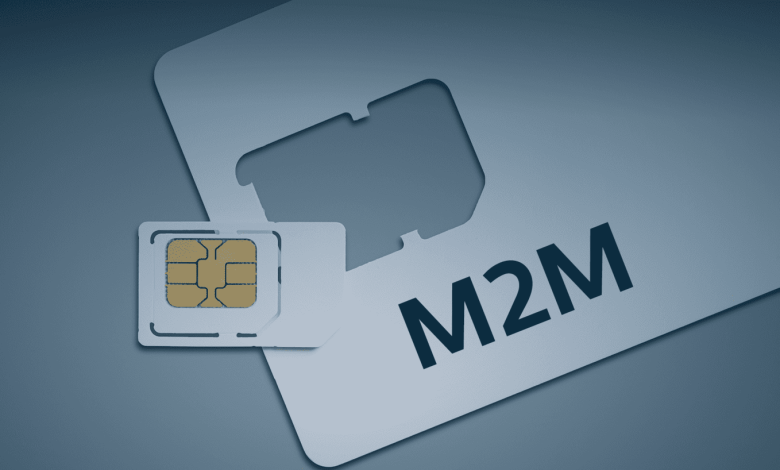What Are the Key Features of M2M SIM?

M2M SIM comes in all forms of mobile phone form factors, including mini (2FF), micro (3FF), and nano (4FF). The form factor you choose depends on the size of the device, its connectivity needs, and the size of the connector.
The Mini form factor is typically used in larger, fixed-location equipment, while Micro and nano forms are typically used in portable devices. If you are considering purchasing an M2M SIM, you should consider these factors before you purchase one.
M2M SIM is multi-channel
M2M SIMs allow machines to communicate with each other and are a key component of the Internet of Things. In addition to driverless cars, these devices also make entire sectors more efficient and smarter. For example, the sensors in driverless cars communicate with each other.
These devices also help businesses identify customers’ preferences and make business decisions. M2M SIMs are the answer to many of the problems in the industry today.
M2M SIMs are available in all three mobile phone form factors: nano, micro, and mini. When selecting the form factor, there are a few things to keep in mind. Generally, space and connector costs will be the major considerations.
Nano SIMs are typically incorporated into smaller devices and are not commonly used in larger fixed-location equipment. If space is an issue, consider an M2M SIM if your device is not in a crowded space.
M2M sim can operate on different GSM networks
While conventional SIM cards only use the network of the network issuing the card, M2M SIM data plans allow you to connect to as many networks as possible. This means that your IoT or M2M project won’t be limited to a single network, but can connect to many different networks for better coverage.
This feature is especially important if your project requires continuous connectivity in various locations. Using M2M SIMs will ensure that your project’s devices stay connected and trackable no matter where they go.
As the number of smart devices increases, so does their use. The smart home market includes security, heating, and lighting devices. By using M2M SIMs, you can view how well these devices perform.
You can also install plug-and-play solutions. And M2M SIMs are widely used in fixed systems, such as in transportation and logistics. And they are becoming more common in the digital transformation world.
M2M SIM is secure
M2M SIMs provide flexible and secure connectivity for a variety of industrial applications. These systems allow for increased security and privacy by securing the connection through a private or public IP address.
They also include encryption, which can be essential if sensitive information needs to be transmitted. Smart monitoring is the fastest growing technical development of the last decade.
M2M SIMs are a crucial part of this technology, providing endless industrial processes with flexible connectivity and security.
M2M SIMs are available in all form factors of a typical mobile phone. They are available in mini (2FF), micro (3FF), and nano (4FF). Choosing a form factor is typically determined by space and connector cost.
Mini SIMs are often installed in fixed-location equipment, while Micro SIMs are typically found in portable devices. Nano SIMs are generally incorporated into smaller devices, such as smartwatches, earbuds, or other similar devices.
They enable remote access for machine communication
M2M SIMs enable remote access for machines to communicate with each other. They are the core of Internet of Things technology and the key to many tech-centric visions of the future. For example, a driverless car requires the monitoring of patient vitals through IoT sensors that communicate with each other.
This technology allows entire sectors to become smarter and more efficient, and it’s a crucial piece of the puzzle to make these visions a reality.
M2M SIMs are highly versatile and flexible. The main advantage of these cards is that they support cellular networks of all types and are not locked to one particular network provider.
These cards are also capable of handling data from different machines and can be managed centrally with the help of an IoT management platform. The technology can also be used to remotely manage IoT devices, which often move from one location to another.
They are flexible
When it comes to connecting devices with cellular networks, the M2M SIM is a crucial piece of the puzzle. The device itself must be rugged and robust to withstand impacts and other elements.
This type of SIM can be found in two basic sizes: ID1 and credit card. Other forms include quarter or half-sized SIMs. The latter are more environmentally friendly due to the fact that they require less plastic than a standard SIM card.
A M2M SIM can withstand extreme temperatures, vibrations, and harsh environments. It can function in arctic climates and in vehicles. The embedded version of the SIM is able to withstand high vibrations and corrosion and can operate in temperatures as low as -40°F.
The SIM can also be used in agricultural soil sensors in a cornfield. Flexible features of M2M SIMs help businesses stay in compliance with their environmental regulations.
They offer value-added services
The M2M value-added services market is growing at a significant rate in the cellular industry. This technology enables connectivity over multiple wireless networks, including WiFi and cellular. Cellular M2M VAS are designed to meet a variety of enterprise needs.
Applications include asset tracking, fleet management, and video surveillance. In addition to enabling better decision-making, these services can also reduce operational breaches.
These value-added services can be incorporated into your M2M project with the use of an M2M SIM. These services include secure VPN data tunnels and a reliable connection over multiple radio standards.
This technology offers numerous benefits for your business and your connected m2m assets. M2M SIM plans are an ideal solution for businesses and consumers alike. A SIM for your device can be purchased online to get a free trial.
Other key characteristics of m2m include low power consumption, time tolerance, and numerous monitoring capabilities, time control (meaning data can only be sent or received at specific predetermined intervals), location specific triggers, and the ability to send and receive small amounts of data continuously.





